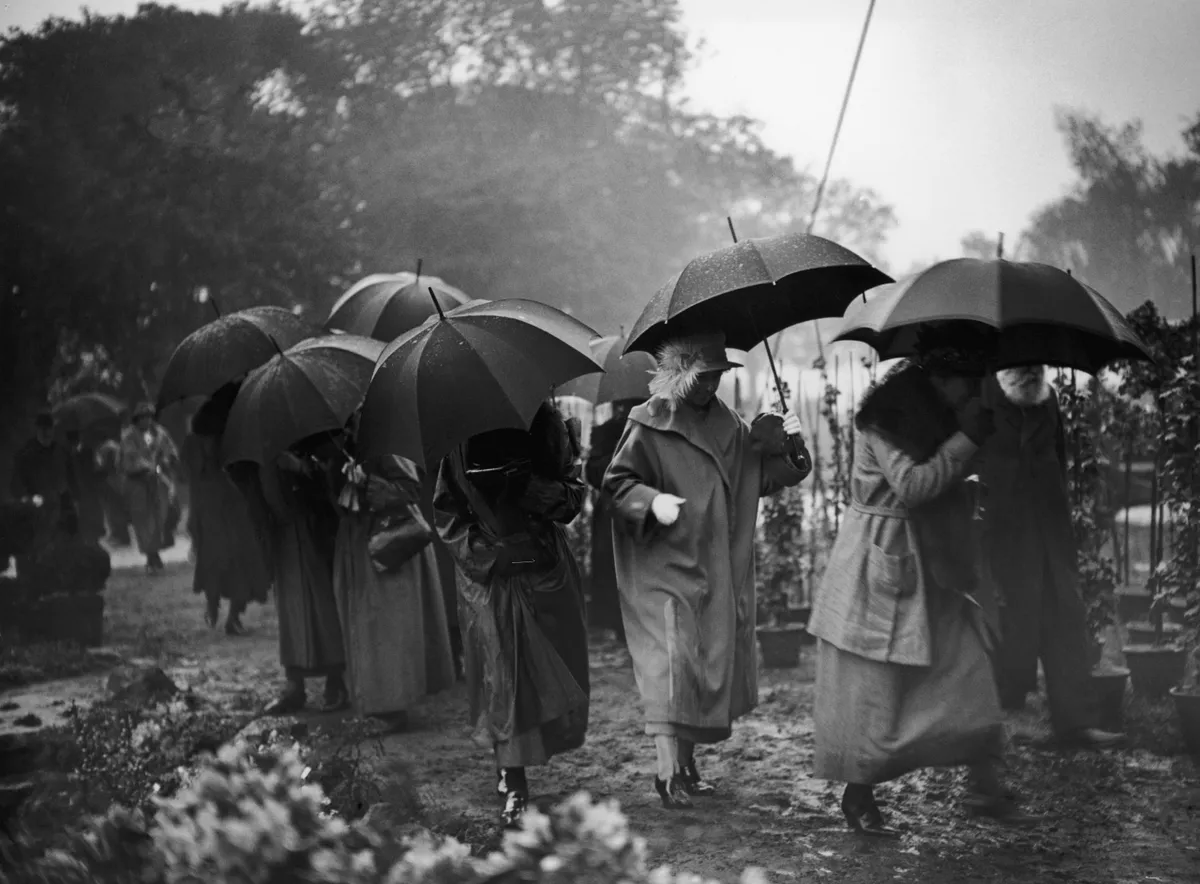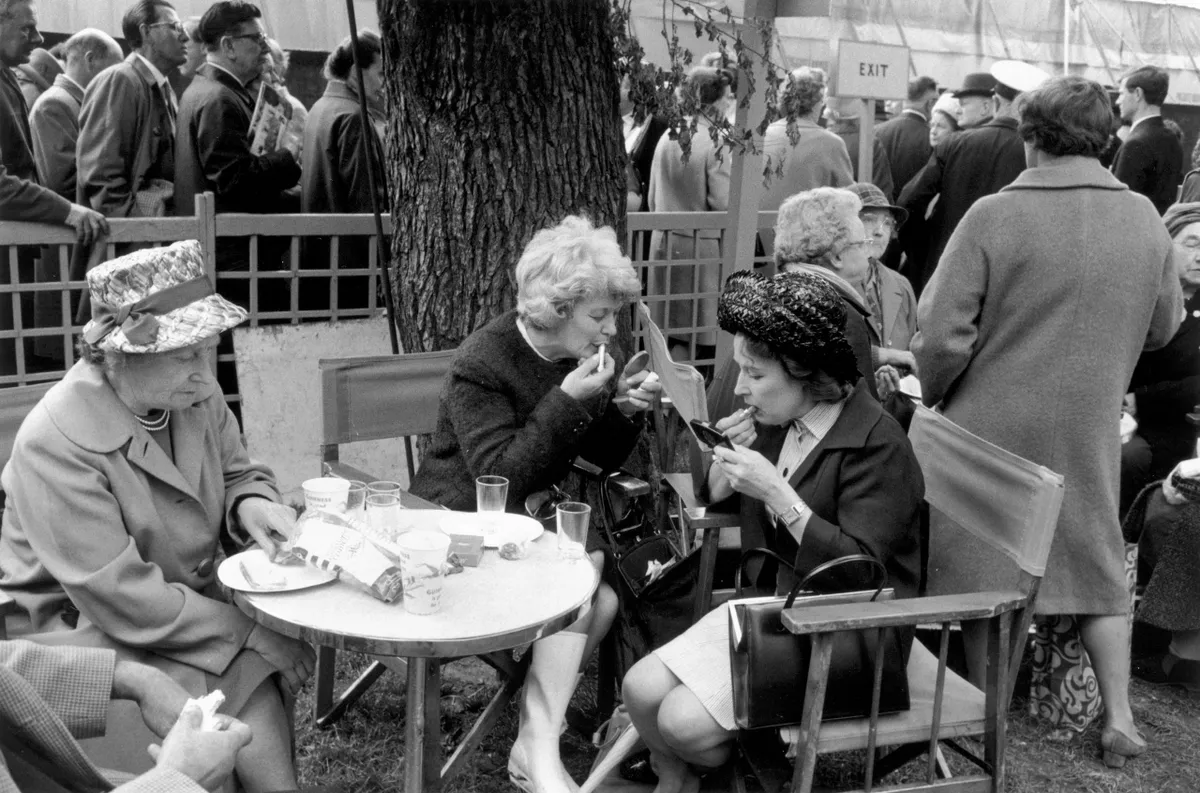On 20 May 1913, the Royal Horticultural Society held its Great Spring Show in the grounds of Chelsea Hospital for the very first time. It was a roaring success. So many exhibitors applied to join the show that only half could be accommodated, but of the 244 who made the cut, Kelways, Blackmore & Langdon and McBeans Orchids are still exhibiting over a century later.
You may also like:
- Tickets, information and what to expect at Chelsea
- Discover all our up-to-the-minute Chelsea news
- Chelsea Flower Show Gardens 2025: discover the full list
- How to design a garden at Chelsea
- Sign up to our Chelsea newsletter
The show, pronounced the Gardeners’ Chronicle on 29 May, ‘exceeded all expectations’, ‘so large and numerous were the groups, and so magnificent the quality of the varied exhibits’. A massive single tent extended over two acres, enclosing 84 ‘large groups of flowers, plants and shrubs’ and 95 exhibition tables.
Its first exhibit appears to have been a potato, proudly displayed by a Mr Minier in 1805
Out in the open, there was a chance to indulge the huge popular appetite for rock gardening. The first Gold Medal for a garden went to J Wood of Boston Spa, with a rocky scene that might ‘easily be imagined to be a bit of the Yorkshire Fells bodily transported South’.
The Society’s experience of shows had not always been so glorious. Its first exhibit appears to have been a potato, proudly displayed by a Mr Minier in 1805. There was no thought of involving the public until 1827, when the Council, desperate for cash (the Secretary having embezzled the funds and hot-footed it to France), decided to hold a fête at the Society’s garden in Chiswick.
You may also like
- Ten essentials for visiting Chelsea Flower Show
- The history of the RHS Chelsea Flower Show
- 12 furniture ideas from Chelsea Flower Show
- The best Chelsea Flower Show gardens
- Top garden design tips from a Best in Show winner at Chelsea
It proved such a money-spinner that it was repeated the following year, despite fears of the ‘dissipation’ such merrymaking might engender among gardeners. In 1829, however, disaster struck, in the form of torrential rain. Visitors, it was reported, stood ‘ankle deep in water oozing from the gravel; shrieks were dreadful and the loss of shoes particularly annoying.’ This experience, of course, is perfectly familiar from subsequent Chelseas, including 1971 and 1995.
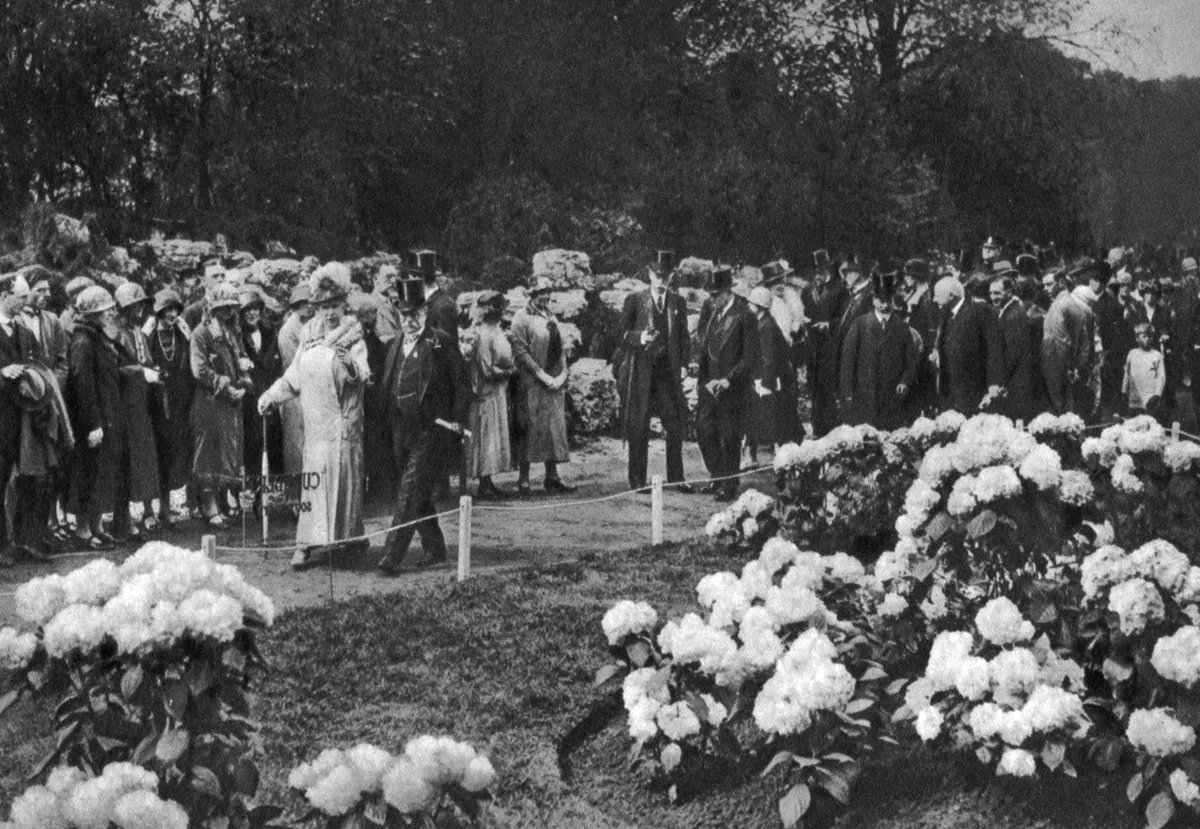
More sober shows continued to be held at Chiswick over the next two decades, but petered out in 1857, as the Society ran out of money. But it was during this time that a non-competitive system of medals was introduced very similar to that employed today. A great new garden at Kensington, backed by Prince Albert, and intended as a more accessible show venue, hosted the first Great Spring Show in 1862, but proved a financial disaster. In 1888, Kensington was abandoned, and the Show moved to Inner Temple. The Benchers, however, became increasingly disenchanted with the noisy and malodorous proceedings, and by 1911, the RHS was looking round for another site.

Tea in a tent
In 1912 there was no show at all, as the RHS lent its support to an international horticultural extravaganza staged in the grounds of Chelsea Hospital. This, however, served to demonstrate the suitability of the site on the Chelsea Embankment, with its easy access and commodious lawns.
Though the RHS leased only ten acres (the 1912 exhibition took 28), there was still room for 17 outdoor show gardens. The Royal Artillery Band provided music. Tea could be taken in the tent for 1 shilling or on the lawn for 1/3d (there was also an area labelled ‘Second Class Refreshments’). There was royalty in the shape of Princess Alexandra and horticultural royalty in Waterers of Bagshot, tree supremo RC Notcutt and Allwood Carnations. All the key Chelsea ingredients were in place.
A second successful show was staged the following May, but in August, war was declared. 1915 and 1916 saw low-key shows, but no more followed for the remainder of the war. When Chelsea resumed in May 1919, the gardening landscape had changed beyond all recognition. Yet the aristos still turned up on the first day to tour the show with their head gardeners. The Hon Vicary Gibbs, or rather his gardener Edwin Beckett, continued to sweep the board with his mammoth vegetables right up until 1930.
Garden theatre
In 1929 came the first hint of how the Chelsea Flower Show would develop, with a dazzlingly theatrical triptych of gardens from California, representing a redwood grove, Death Valley and the Mojave Desert. In fact, many aspects of present-day Chelsea were already familiar in the 1930s.
Judges deliberated and royalty admired before the show opened to the public. Overcrowding was already a problem, leading to timed tickets and reduced-price evening admission. Even the moans were similar – in 1931 the Daily Express was already calling for Chelsea gardens to be more down-to-earth.

When World War II broke out, the Flower Show was cancelled for the duration, but an austerity Chelsea was staged, with tremendous effort, in 1947. The Coronation in 1951 was celebrated, as in 1937, with an extravaganza of plants from around the Commonwealth. By the 1960s, rock gardens had fallen from fashion, and the nurserymen who had dominated the show were about to give way to a new elite, garden designers.

In the years that have followed, Chelsea has continued to hold a mirror up to our gardening preoccupations. The 1960s espoused gardening for the masses. The first garden for the disabled appeared in 1967; wildlife gardens became increasingly popular from the late 1980s; the 1990s were all about lifestyle and design.
In recent years, Chelsea has taken up ecological and social concerns – banning limestone and rainforest timber, and encouraging children, prisoners and community gardeners to show their skills. In recent years, olive and oak trees have been banned thanks to plant disease concerns. And mental health and wellbeing have taken centre stage.

Royals, rather than just visiting the show, have become actively involved – Prince Harry collaborated with Jinny Blom on the Garden for Lesotho in 2013, while the Duchess of Cambridge worked with the RHS on their Back to Nature garden in 2019.
Chelsea has always been strong on nostalgia. But every few years comes a garden that breaks the mould – Christopher Bradley-Hole’s minimalist Latin Garden in 1997, or the haunting DMZ Forbidden Garden in 2012, that proved that even show gardens can have seriousness and meaning.
In 2020 the show went virtual during the pandemic and 2021’s September show, with a focus on autumn plants, was a welcome diversion from the norm. In 2022, the show went back to its usual May slot, with a new sponsor, The Newt in Somerset.
Since 2021, sponsorship of the show gardens has been revitalised by Project Giving Back. The vision of two RHS life members who have chosen to remain anonymous, the project initially pledged to fund up to 42 gardens at RHS Chelsea over three years from 2022 to 2024. In 2023, PGB announced it would extend its support for RHS Chelsea Flower Show gardens until 2026. It is a requirement that all of the gardens be relocated to permanent locations after the show, creating a lasting legacy for the charities and their beneficiaries.
The smaller All About Plants garden category was introduced in 2022. The gardens focus on plants, with minimal hardlandscaping, and champion ‘the positive power of plants to improve lives and livelihoods’.
Towards a sustainable future
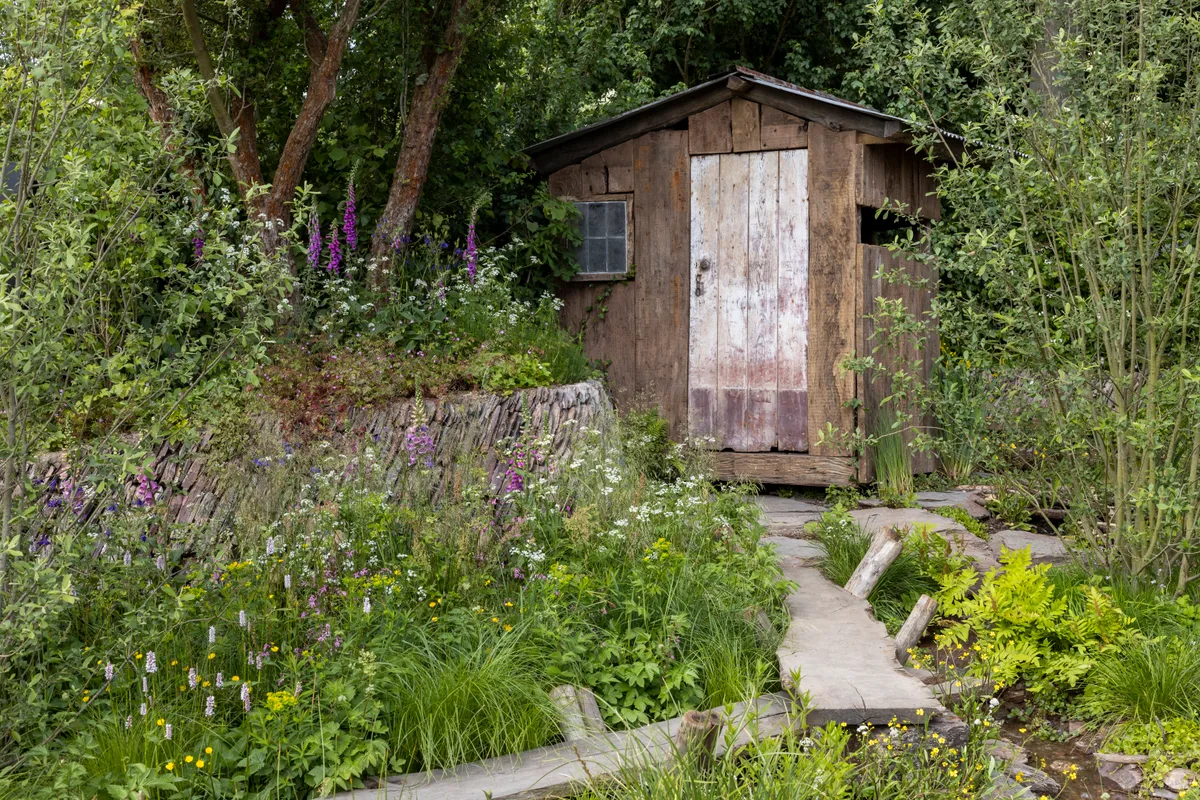
The RHS recently launched its Sustainability Strategy, which saw the organisation shifting from a gardening charity to one with more of an environmental focus, and this is increasingly being reflected at Chelsea.
For the first time in 2024, all eight show gardens and seven sanctuary gardens went through a preliminary Green Garden Audit to improve their carbon footprint, and all had some sort of relocation plan in place. Soon all cement-based concrete will be banned from the showground, and many show gardens are now made without concrete, which has the added advantage of making them easier to break down and relocate, as well as more permeable. Earlier this year, the RHS said that it had no choice but to delay plans to make its flower shows peat-free by the end of 2025, blaming a lack of Government action on peat-free targets.
Native plants and weeds
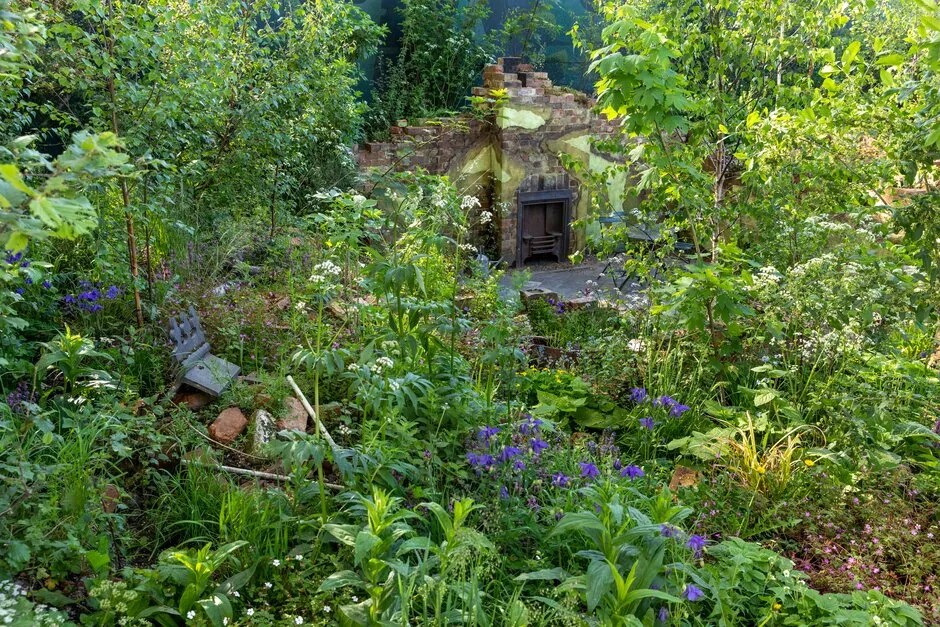
Native plants that benefit wildlife now often take centre stage in the show gardens, with blossoming hedgerows, native trees including hawthorn, hazel, crab apple, hornbeam and sweet chestnut, wildflowers like cow parsley and poppies, and swathes of wildflower meadows. In 2022, Lulu Urquhart and Adam Hunt won Best in Show with their A Rewilded Britain garden, which used native British plants to create a naturally rewilded landscape following the reintroduction of beavers in south-west England.
Even weeds have featured at the show. In 2023, Cleve West's Centrepoint garden featured dandelions, nettles, green alkanet, cleavers, wood avens, buttercups and daisies.
In 2025, the All about Plants gardens will be highlighting the native flora and fauna of the British Isles.
Opinion: The Chelsea flower show is embracing the shaggy
All change in the Great Pavilion
The Great Pavilion represents the beating heart of Chelsea, where top nurseries exhibit. Nursery numbers have fallen for a variety of reasons, but there is still plenty to see.
House plants are now also a firm fixture at the show, too. The Houseplant Studios were introduced in 2021, a response to the extraordinary growth popularity of houseplants as lockdown. Unlike the show gardens, these garden buildings can be stepped into and explored, and showcase a wide range of plants.

